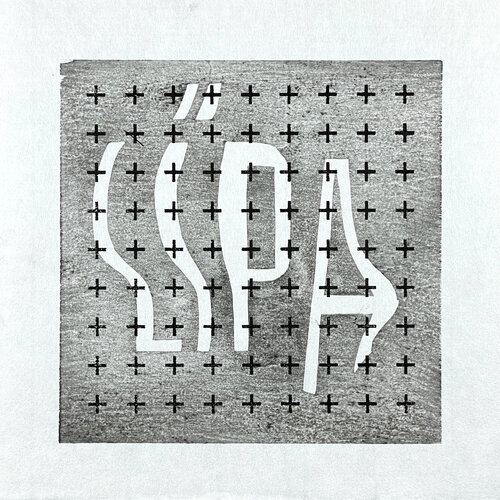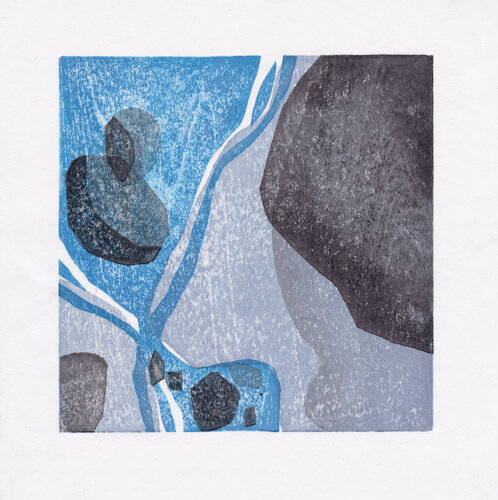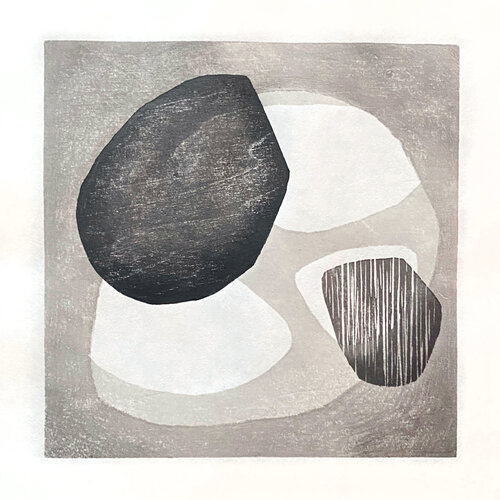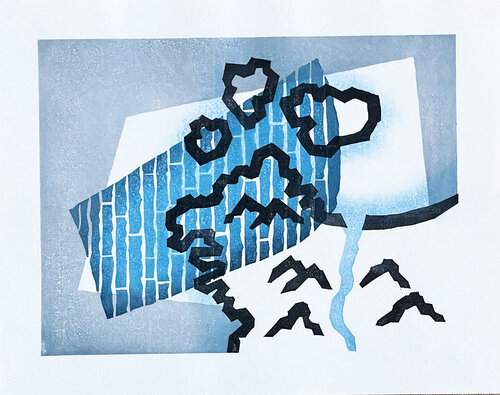grenze meja
grenze meja
This artwork is part of the Print no border series.
wwww.printnoborder.com
Print no border explores the border and frontier concepts via xylography practice, juxtaposing, stratifying, and comparing the geographical representation of boundaries with images borrowed from nature and the man-made elements that boundaries cut through.
All the prints are inspired by the boundary lines drawn between nations, in a handful of valleys in the intersection between Italy, Slovenia and Austria. Boundaries such as these, as shown on digital maps, are reinterpreted and transformed in expressive ways and measured up – even juxtaposed – to the representation of patterns, fragments and marks deriving both from satellite images and photographs and images, often of nature, collected during surveys of the various locations. The project focuses on boundaries-frontiers seen through a range of filters both physical and cultural responding to line-joining-up-points rigour generating an emotional cartography which starts from physical representation, cites the reproduction scale and then uncouples from the recognisable atlas to generate an emotional one.
In this sense the potential offered by printmaking, proceeding in levels, becomes significant also in restoring the stratification of the various languages and offering up a transparency process. The project as a whole is structured around square proportion matrices and identical sizes. This makes it possible to combine all the graphics developed in a modular way, making the decision to structure the visual information in strata structural and not only expressive.
The upper Friuli area is a polyglot one in which the Italian, Friulana, Slovenian and German languages are spoken, together with dialects of these, with their language status being a deeply felt issue around which policies designed to safeguard, promote and teach the area's linguistic heritage have emerged from demands which began, at times with some difficulty, to strike a chord in local and community policies only in the second half of the 1920s.

Laura Bortoloni
More from this artist
Ontwerp: Studio Mast | Website: eps en kaas





